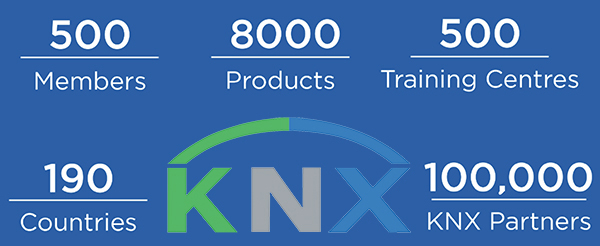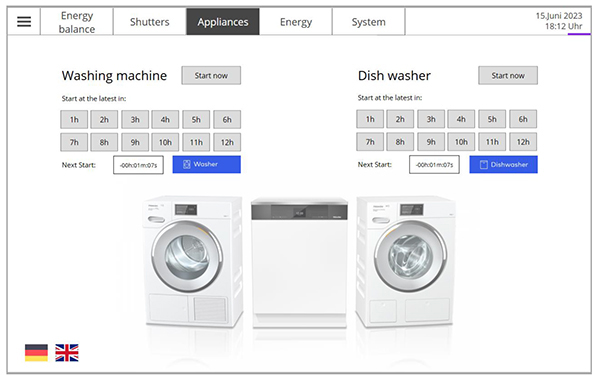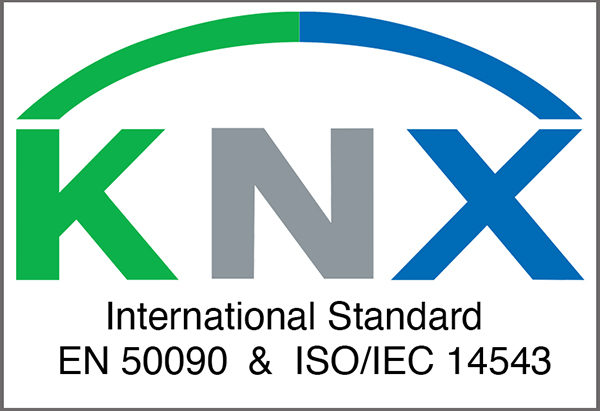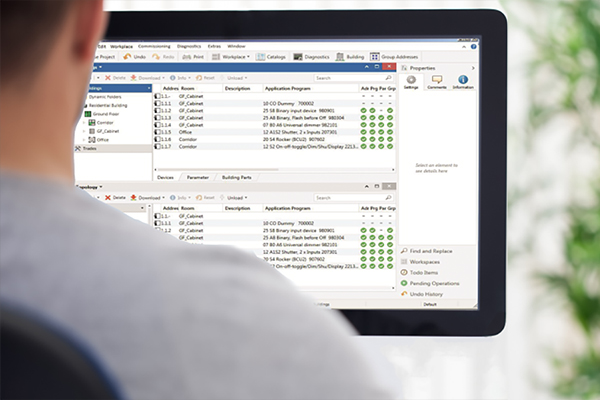
In Part 1 of this two-part series, Yasmin Hashmi describes to the lay-person what KNX is, what it can do, and why it can be trusted.
Over the Christmas period, I have been socialising quite a bit, and when people ask me what I do, I answer that I edit a magazine dedicated to a building control protocol called KNX. If, like me, you get a quizzical look when you mention KNX and you wonder what to say, here is my short answer: KNX is an electronic language that devices for controlling lighting, heating, air-conditioning, ventilation etc use to speak to each other in order to make buildings more energy efficient. It was developed by a handful of European manufacturers over thirty years ago, and now over 500 manufacturers comply with it. This means that you can mix and match over 8000 different products, and they are all guaranteed to work together. This gives you massive choice and ensures that you are never dependent on one supplier.

At this point, I get a polite ‘Oh, that’s good.’ But I haven’t finished. I add that KNX is used for automating buildings – any buildings – offices, airports, shopping centres, museums, hotels, theatres, hospitals, sports stadia, schools, homes, you name it. Of course it can do all the impressive bells and whistles of a smart home, including assisted living – you know, with voice control and sensors that know if you need help – but it’s main thing is energy efficiency, and given that 40% of the world’s energy is consumed by buildings, anything that can help reduce our carbon footprint has to be worth shouting about. The response is always much nodding in agreement.

By now my audience is intrigued, but I can see that they do not yet fully appreciate just how brilliant KNX is, so I go on to explain that it can do things like work out that it’s better to angle shutters and turn on LED lighting if it’s very sunny, rather than use the air-conditioning which might be more expensive. Using sensors, it can react to occupancy in various ways such as turning lighting, heating or cooling off when no one’s around. And when people are present, it can open blinds, turn on lighting and increase ventilation according to how many people there are, and even work with booking systems in order to get rooms ready for occupancy in the most efficient way. And then it can work out whether it’s cheaper to store or use electricity from your solar panels, or charge your electric car, by looking at different energy tariffs and current/forecast weather conditions – even turning appliances on at cost-effective times.

I conclude by noting that KNX products hardly ever go wrong, but if they do, you can always find a replacement. You are never at the mercy of one company going bust or losing interest, and your new product is guaranteed to be backwardly-compatible with your system, no matter how old it is.
To anyone listening, or even reading this, it must be evident by now, that KNX is underpinned by some solid values.

Core values
Before my publisher and I were first introduced to the world of building automation in the early 2000s, our experience had been in professional audio and video. We were accustomed to different companies working together to make their systems interoperable. At the most basic level, all music keyboards, audio workstations etc, have a MIDI interface that allows them to communicate with each other. It’s universal.

Imagine our puzzlement then, that the building automation industry was full of proprietary control systems that would not talk to each other, but demanded that you invest in their solution alone. It seemed a bit old fashioned. Then we stumbled across distributor Colin Price of Ivory Egg, at a trade show, who introduced us to KNX. What a breath of fresh air! And from an engineering point of view, complete common sense. Oh my goodness, how KNX has grown since those times.

Interoperability
Back in 1990, the founders of KNX could see that the only way forward for the building automation industry was to make their systems compatible. By cooperating and putting their own immediate commercial interests aside, collectively they could provide people with more choice and better solutions, and therefore grow the pie bigger for all. They set about developing a common language – the KNX protocol – and got it officially recognised as a European standard in 2003, and as a worldwide standard in 2006. This is no mean feat. Indeed in 2013, KNX became the only approved Chinese standard for home and building control – quite an endorsement. From the handful of companies in 1990, membership of KNX Association now exceeds 500.

Timeless compatibility
It’s one thing being compatible in the here and now, but how many electronic products do we have that are perfectly good yet are now considered obsolete? By insisting on backwards compatibility, i.e. that all KNX devices should work together no matter how old or new they are, and standing by this for over 30 years, KNX has proved that it can be well and truly trusted.
Knowing that you can invest in a KNX system that is going to keep working, and working, and working, whether you add to it or leave it alone, is very reassuring, if not critical, in some instances. Moreover, in the unlikely event that a device fails (and I say ‘unlikely’ with good reason) it can be replaced. If a system has to be reprogrammed or expanded, you have an ever-increasing choice of professionals who can do it.

One programming software tool
Yet another core value of KNX Association is to provide one, robust, universal manufacturer-independent configuration software tool to design and configure KNX installations. Called ETS (Engineering Tool Software), it is now in its sixth version (ETS6) and can be used by KNX professionals to configure every single KNX-certified device, no matter what size the project. For the end-user, ETS Home Edition is the adapted version of ETS that allows you to configure one project with up to 64 devices, so that you can create your own smart home according to your needs.

Conclusion
As I always say, ‘Engineers will save the world’ – at some point, all of our homes and places of work, leisure and travel will include some level of automation, but of course it’s not only the KNX Association who can see that this is the future of buildings as we head towards net zero. New players will come and go, and competition keeps us on our toes, but what may be expedient for the contractor this year, may not be in the customer’s interest over the long term. It’s always worth asking, ‘Is this system likely to be supported in years to come, let alone for the lifetime of the building?’
KNX has an impressive pedigree. It has been here for a long time, and has proven that it is a brand you can trust. It is important to the Association, whose members are competitors cooperating for the good of all, that if you invest in KNX, you have a huge choice over the products you use for the optimal solution to your needs, and you will never be abandoned. Your installation will go on and on, you can expand it over time, and you will never be dependent on the whims or fortunes of one company. This is forward thinking at its best.
In Part 2, I will look at some more core values of KNX and its market-leading approach to the future.
Yasmin Hashmi is the Editor of KNXtoday magazine.












